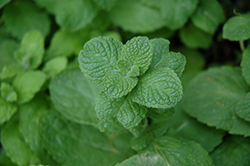


| Phone: |
| 613-599-3419 |
| Email: |
| info@makeitgreen.ca | Location: |
| 5200 Flewellyn Rd. Stittsville, Ontario
Need Directions? Click for map |
Welcome to our plant search tool. This database contains many of the thousands of plants that we carry. There are some notable exceptions. Hundreds of new perennials come out every year and Make It Green has been a leader in making them available to you. Eventually the recent introductions will make it to our plant search tool but every year there will be a lag between our in-store plant selection and this search tool. Unfortunately this search tool can't cover everything that we will carry this year. We also carry over 100 varieties of rare and unusual evergreens and over 100 varieties of hard-to-find shrubs many of which are not in the plant search. Click on the Plant List button for a list of nearly all the woody plants (trees, shrubs and evergreens) that we have ordered or already have in stock for this coming year.
Plant Height: 18 inches
Flower Height: 24 inches
Spread: 24 inches
Sunlight:
![]()
![]()
Hardiness Zone: 6b
Other Names: Woolly Mint, Pineapple Mint, Round-leaved Mint
Description:
This culinary herb is also great as an ornamental plant; rounded, crinkled, rich green foliage; white flower spikes in mid-summer to early fall; great in containers and herb gardens; guard against rapid invasiveness by using container in the ground
Edible Qualities
Apple Mint is a perennial herb that is commonly grown for its edible qualities, although it does have ornamental merits as well. The fragrant pointy green leaves are usually harvested from late spring to early fall. The leaves have a minty taste and a pleasant fragrance.
The leaves are most often used in the following ways:
- Fresh Eating
- Cooking
- Seasoning
- Tea
Features & Attributes
Apple Mint features bold spikes of white flowers rising above the foliage in mid summer. Its attractive fragrant pointy leaves remain green in colour throughout the season.
This is an herbaceous perennial herb with a spreading, ground-hugging habit of growth. Its medium texture blends into the garden, but can always be balanced by a couple of finer or coarser plants for an effective composition. This is a high maintenance plant that will require regular care and upkeep, and should be cut back in late fall in preparation for winter. It is a good choice for attracting butterflies to your yard. Gardeners should be aware of the following characteristic(s) that may warrant special consideration;
- Invasive
Aside from its primary use as an edible, Apple Mint is sutiable for the following landscape applications;
- Mass Planting
- General Garden Use
- Herb Gardens
- Container Planting
Planting & Growing
Apple Mint will grow to be about 18 inches tall at maturity extending to 24 inches tall with the flowers, with a spread of 24 inches. Its foliage tends to remain dense right to the ground, not requiring facer plants in front. It grows at a fast rate, and under ideal conditions can be expected to live for approximately 10 years. As an herbaceous perennial, this plant will usually die back to the crown each winter, and will regrow from the base each spring. Be careful not to disturb the crown in late winter when it may not be readily seen!
This plant is quite ornamental as well as edible, and is as much at home in a landscape or flower garden as it is in a designated herb garden. It does best in full sun to partial shade. It does best in average to evenly moist conditions, but will not tolerate standing water. It is not particular as to soil type or pH. It is highly tolerant of urban pollution and will even thrive in inner city environments. This species is not originally from North America. It can be propagated by division.
Apple Mint is a good choice for the edible garden, but it is also well-suited for use in outdoor pots and containers. Because of its spreading habit of growth, it is ideally suited for use as a 'spiller' in the 'spiller-thriller-filler' container combination; plant it near the edges where it can spill gracefully over the pot. Note that when growing plants in outdoor containers and baskets, they may require more frequent waterings than they would in the yard or garden. Be aware that in our climate, most plants cannot be expected to survive the winter if left in containers outdoors, and this plant is no exception. Contact our experts for more information on how to protect it over the winter months.
This plant is not reliably hardy in our region, and certain restrictions may apply; contact the store for more information.


